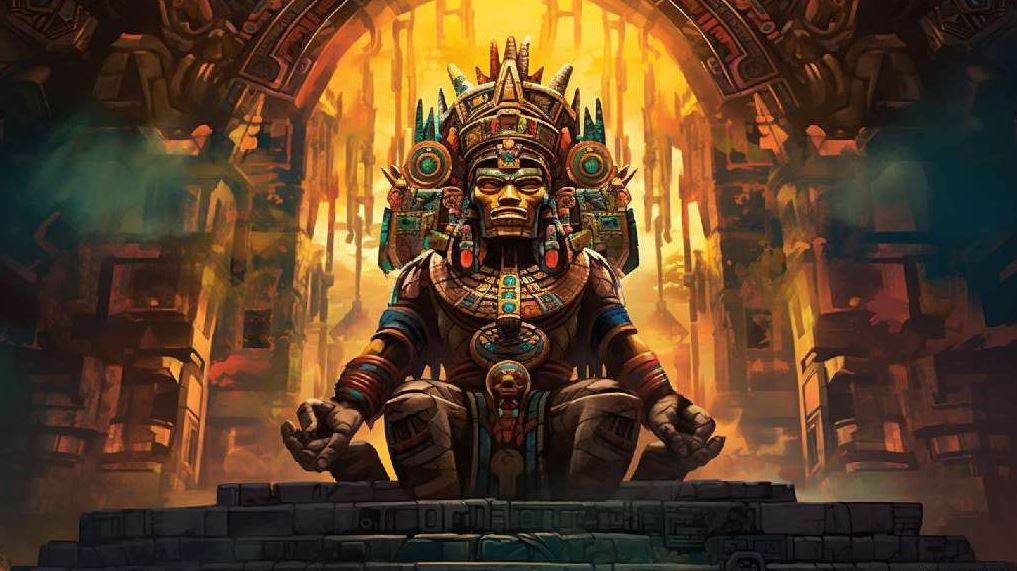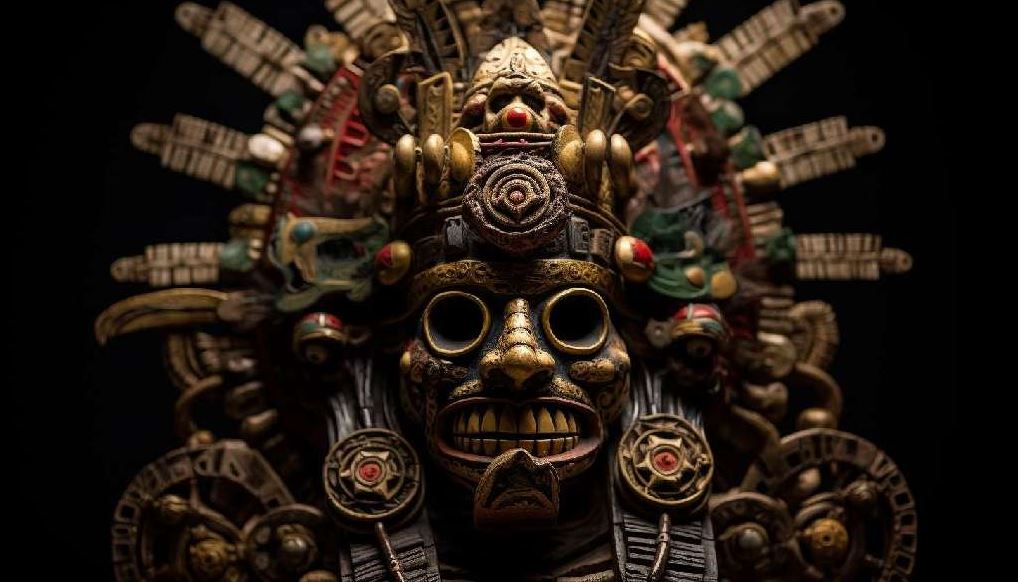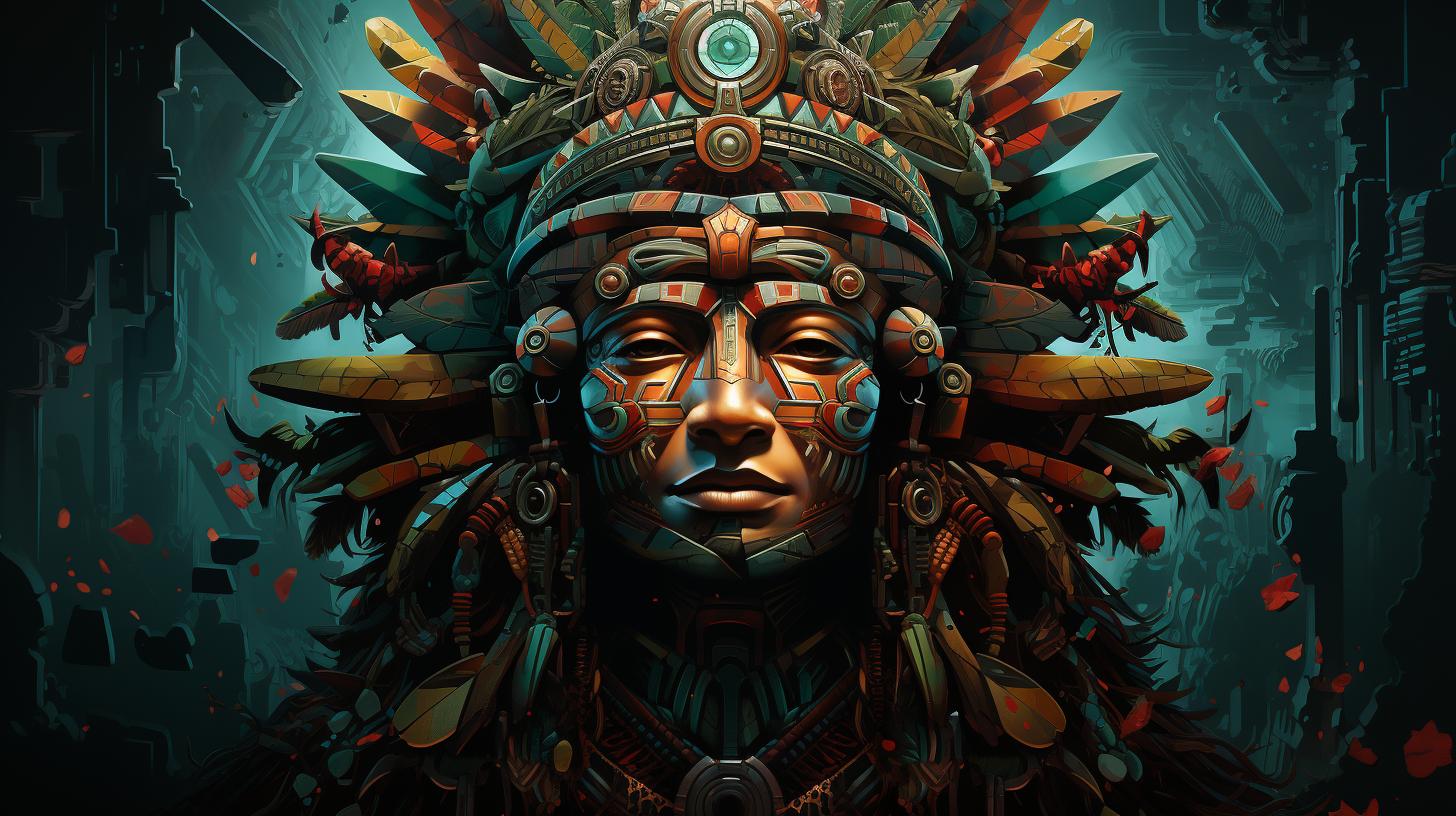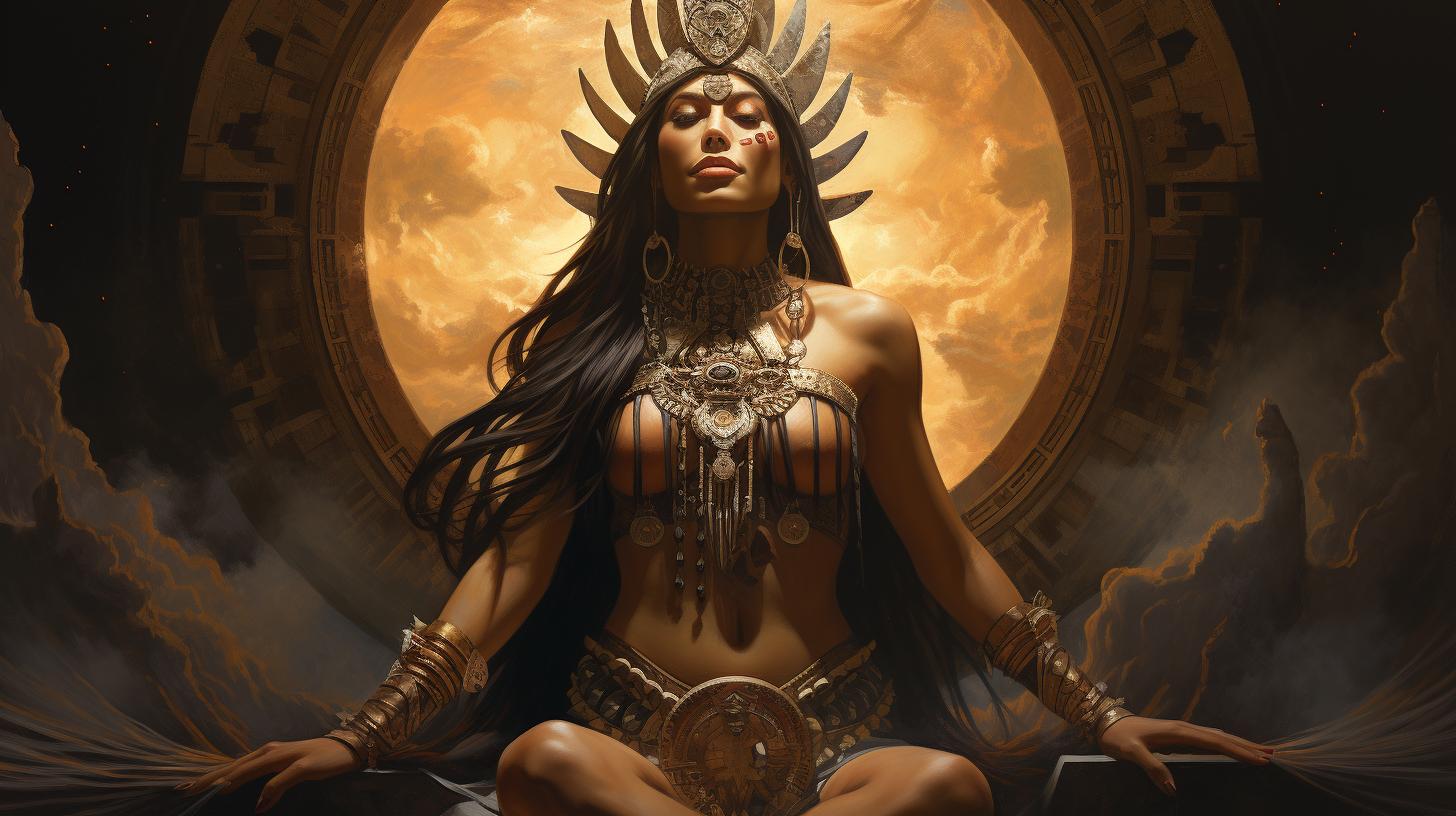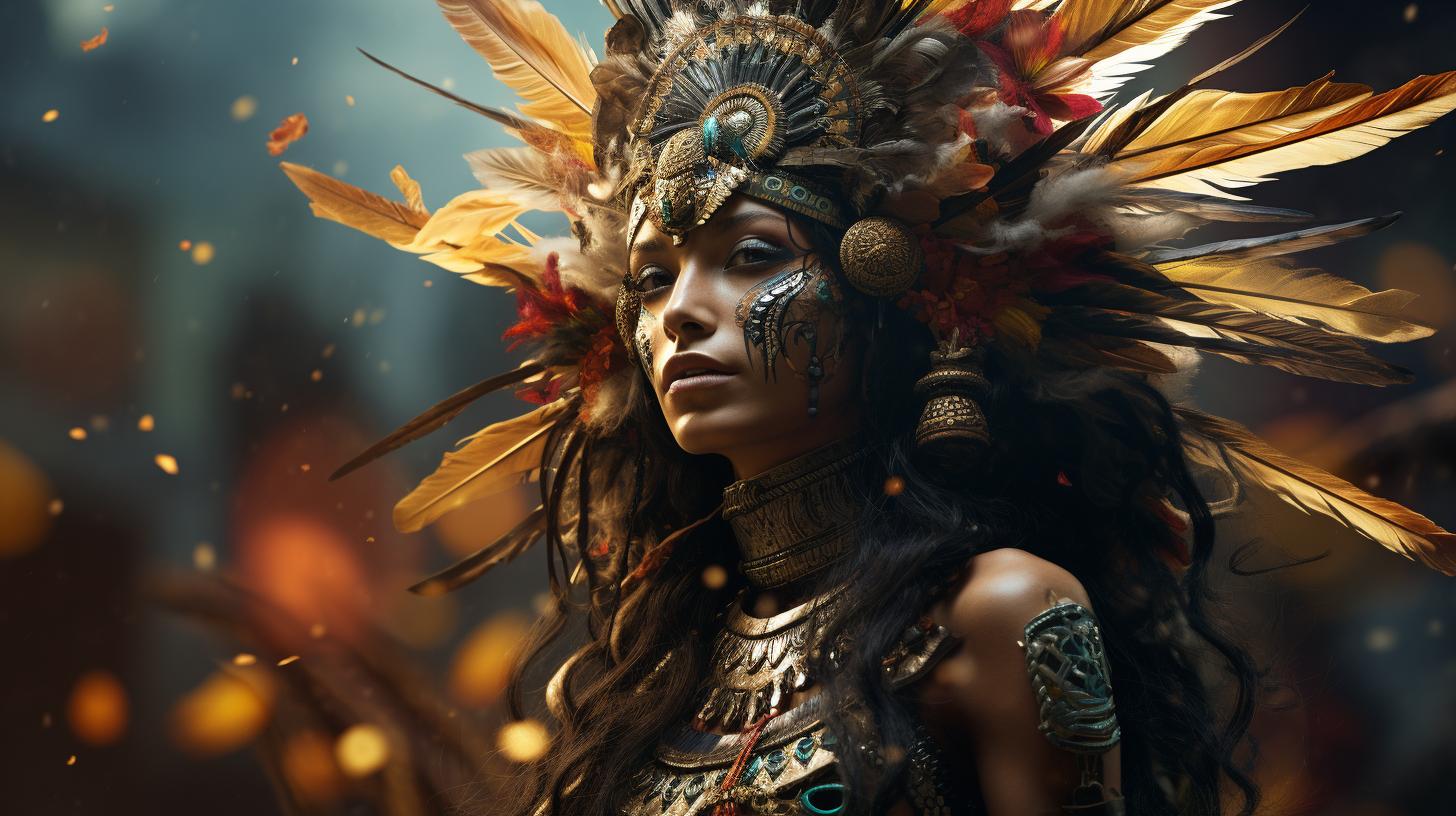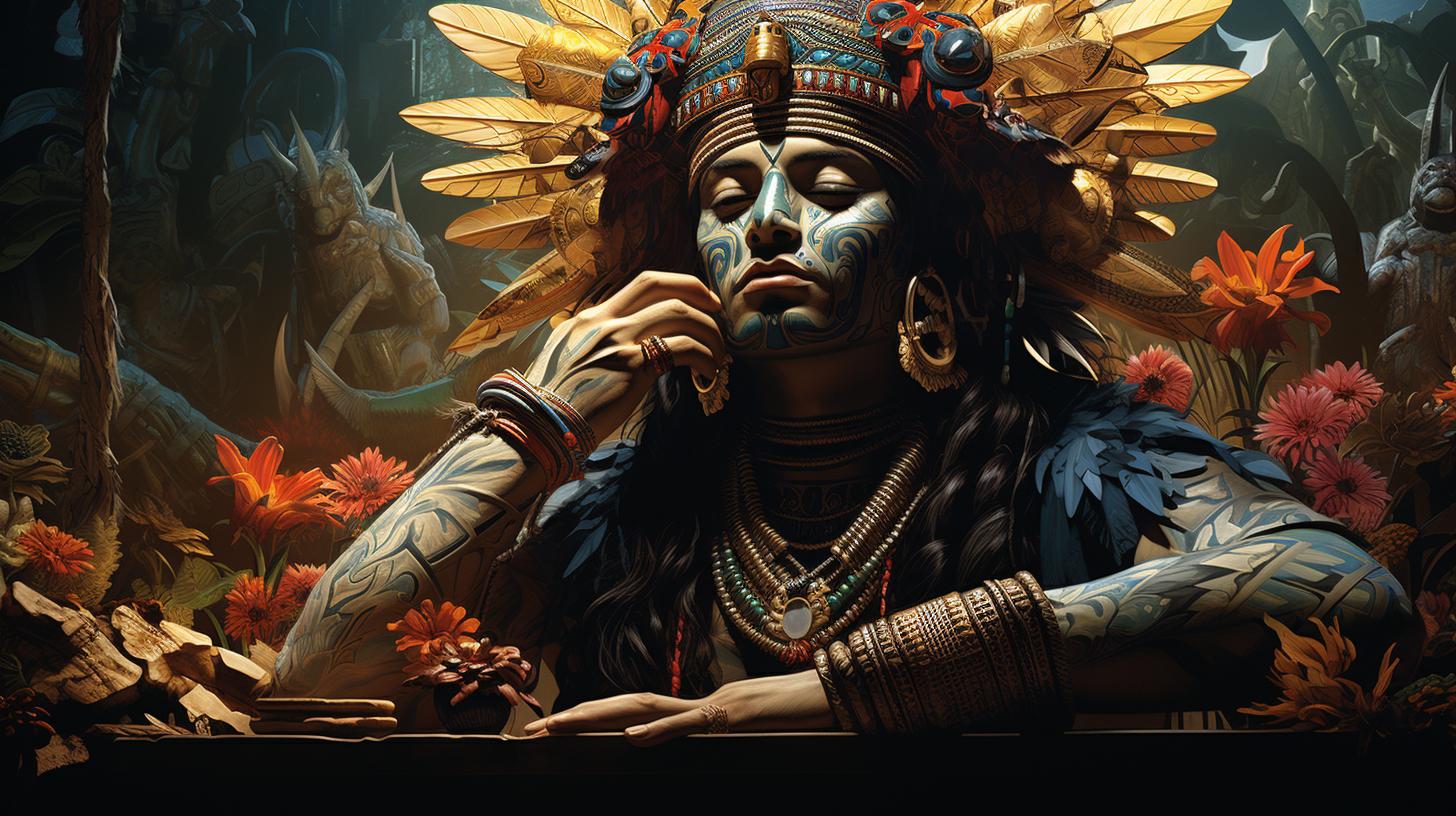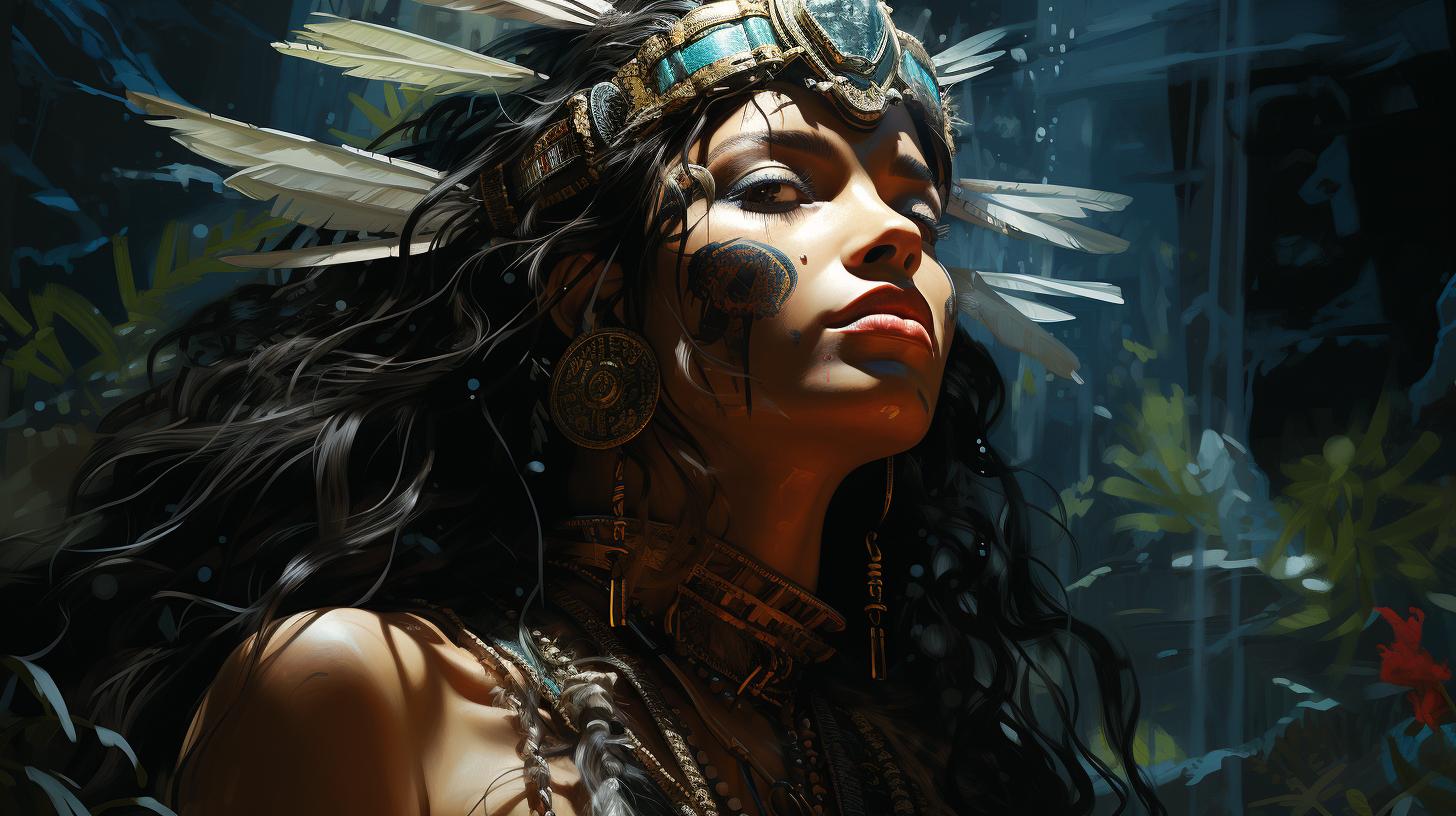Tecciztecatl: Exploring the Aztec God of the Moon
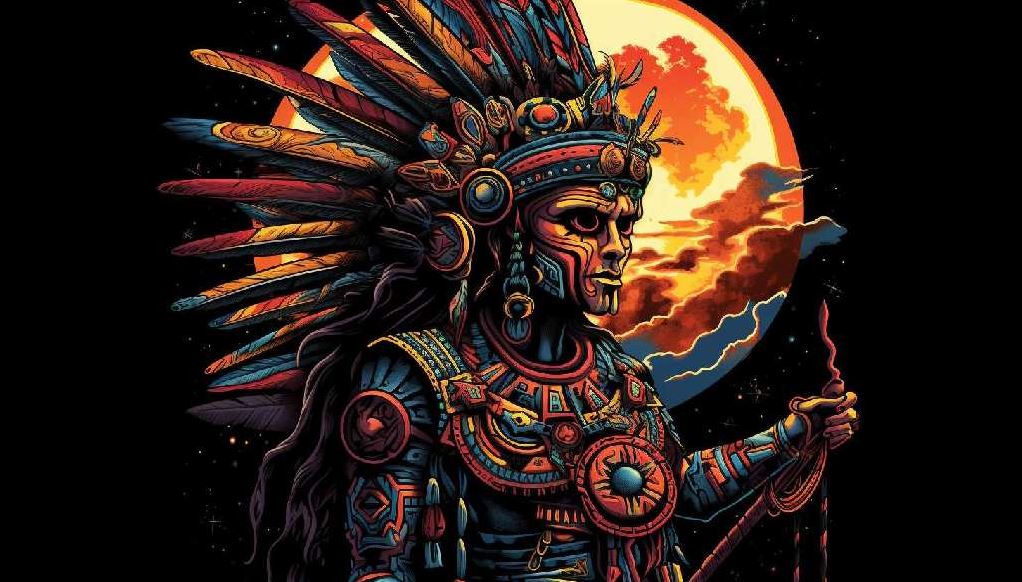
Tecciztecatl, the Aztec god of the Moon, holds a significant place in Aztec mythology. Originating from divine parentage, Tecciztecatl faces a daunting challenge that leads to his transformation into the moon.
His representation includes the symbolism of a conch shell and rulership of the sixth day. Within Aztec beliefs, Tecciztecatl is regarded as the deity of the moon, highlighting his mythical story and his association with weakness due to a lack of courage.
This article explores Tecciztecatl’s role in the Aztec pantheon, his depiction in art and literature, and his enduring cultural legacy.
The Mythology of Tecciztecatl Aztec God
Tecciztecatl, the Aztec god of the Moon, is a prominent figure in Aztec mythology. This section explores the captivating mythology surrounding Tecciztecatl, delving into his origins, parentage, and the transformative events that shaped his role as the lunar deity.
Origins and Parentage of Tecciztecatl
Tecciztecatl’s lineage can be traced back to Tlaloc, the god of rain, and Chalchihuitlicue, the goddess of water. As the offspring of these powerful deities, Tecciztecatl inherited significant cosmic responsibilities and attributes.
The Challenge of Illuminating the World
In the primordial stages of the world, the gods gathered to determine who would illuminate the universe. Tecciztecatl bravely volunteered to light up the One World; however, when the time came to perform the necessary rituals, fear overcame him, and he couldn’t fulfill his commitment.
Transformation into the Moon
In a surprising turn of events, Nanahuatzin stepped forward to accept the challenge, transforming himself into the sun, while Tecciztecatl became the moon. To diminish Tecciztecatl’s brilliance, the gods threw a rabbit at him, leading to his weakened luminosity and symbolic association with the moon’s soft glow.
Overall, the mythology of Tecciztecatl showcases his pivotal role in the Aztec belief system and his profound transformation into the lunar deity. Exploring these origin stories provides valuable insights into the significance of Tecciztecatl and his compelling narrative within the larger framework of Aztec mythology.
The symbolism surrounding Tecciztecatl, the Aztec god of the Moon, holds significant cultural meaning and is deeply rooted in Aztec beliefs. This section explores the various aspects of Tecciztecatl’s symbolism and how he is represented in Aztec art and imagery.
Tecciztecatl’s Conch Shell and its Meaning
One prominent symbol associated with Tecciztecatl is the conch shell. In Aztec culture, the conch shell represents beauty, purity, and the Divine. Tecciztecatl is often depicted holding a conch shell, signifying his connection to the Moon and its transformative powers.
The conch shell is also associated with the element of water, linking Tecciztecatl to the life-giving properties of the moonlight.
Tecciztecatl as the Ruler of the Sixth Day
Tecciztecatl holds a significant role as the ruler of the sixth day in the tonalpohualli, the Aztec sacred calendar. This position symbolizes his authority and power over time and the cyclical nature of the universe.
As the ruler of the sixth day, Tecciztecatl is believed to bring balance, harmony, and abundance to those born on this day.
Depiction of Tecciztecatl in Aztec Art and Imagery
Aztec art offers a glimpse into the representation of Tecciztecatl. In various codices and murals, Tecciztecatl is often portrayed as an elevated figure adorned with extravagant ceremonial attire. His depiction emphasizes his lunar nature, with a crescent moon adorning his forehead and a shimmering glow emanating from his form.
This imagery emphasizes his connection to the celestial realm and elicits a sense of awe and reverence.
Overall, the symbolism and representation of Tecciztecatl in Aztec culture highlight the significance placed on the moon and its transformative power. Through the conch shell, his role as the ruler of the sixth day, and his depiction in art, Tecciztecatl’s importance as the Aztec god of the Moon is underscored, solidifying his place within the rich tapestry of Aztec mythology and belief.
Tecciztecatl Aztec God in Aztec Beliefs
Tecciztecatl plays a significant role as the Moon deity in Aztec beliefs, unveiling intricate narratives and symbolism within the Aztec pantheon.
Tecciztecatl’s Role as the Moon Deity
Tecciztecatl holds a prominent position as the god of the Moon in Aztec mythology and religious practices. Revered as the masculine aspect of the Moon, Tecciztecatl symbolizes the lunar force that governs the night sky.
In Aztec beliefs, the Moon represents various aspects such as fertility, timekeeping, and cosmic balance.
The Aztec Belief in Tecciztecatl’s Weakness and Lack of Courage
The Aztecs perceived Tecciztecatl as a deity associated with a lack of bravery and valor. The mythological narrative of Tecciztecatl’s failed attempt to illuminate the world showcases his perceived weakness.
This perceived weakness is intricately woven into Aztec beliefs about the nature of the Moon, raising questions about the interplay between strength and vulnerability in their worldview.
Significance of Tecciztecatl’s Relationship with Sun Deities
Tecciztecatl’s relationship with the Sun deities assumes a crucial role in Aztec cosmology. As the Moon god, Tecciztecatl is believed to have a complex and dynamic interaction with the Sun gods.
This relationship symbolizes the eternal balance between light and darkness, day and night, and the cosmic harmony that governs the Aztec worldview. It embodies the cyclical nature of the celestial bodies and their influence on the human experience.
In conclusion, Tecciztecatl’s significance as the Moon deity in Aztec beliefs extends beyond a mere celestial presence. His role encompasses various facets of Aztec cosmology, from the duality of strength and weakness to the interconnectedness of celestial bodies.
By exploring Tecciztecatl’s mythology and his relationship with other deities, we gain a deeper understanding of the profound intricacies embedded within Aztec belief systems.
The Aztec Pantheon and Tecciztecatl’s Place
The Aztec pantheon is a richly diverse collection of gods and goddesses that played significant roles in the Aztec belief system. Among these deities, Tecciztecatl held a prominent position and had deep connections with various other gods and goddesses.
The Gods and Goddesses of the Aztec Pantheon
The Aztec pantheon comprised a vast and intricate network of gods and goddesses, each with their distinct powers and attributes. From the fierce warrior god Huitzilopochtli to the benevolent earth goddess Coatlicue, the Aztec pantheon represented various aspects of the natural and supernatural world.
Tecciztecatl’s Position among the Aztec Gods
Within the Aztec pantheon, Tecciztecatl held the distinguished role of the Moon god. As the masculine representation of the moon, Tecciztecatl was revered and worshipped for his association with night, fertility, and the ever-changing lunar cycle.
His unique transformation into the moon solidified his importance and cemented his place among the divine entities of Aztec mythology.
Connections and Interactions with Other Deities
Tecciztecatl’s interactions with other deities in the Aztec pantheon deepened his significance and interconnectedness within the celestial hierarchy. He shared a strong association with Tlaloc, the rain god, and Chalchihuitlicue, the goddess of water and lakes, as they were his parents.
His connection to these prominent deities further emphasized his role as a crucial figure in the Aztec belief system.
As we explore the multifaceted nature of the Aztec pantheon, it becomes evident that Tecciztecatl’s position within it was critical and interconnected with various other gods and goddesses, solidifying his status as a central figure in Aztec religious beliefs.
Tecciztecatl in Art and Literature
Tecciztecatl, the Aztec god of the Moon, holds a significant presence in Aztec art and literature. This section explores various aspects of Tecciztecatl’s representation in these creative mediums, shedding light on his enduring cultural influence.
Representation of Tecciztecatl in Aztec Codices
Aztec codices, ancient manuscripts central to Aztec culture, depict Tecciztecatl in intricate detail. These visual representations often showcase him adorned with a conch shell, symbolizing his lunar nature. Additionally, artists emphasize his association with the moon through the use of crescent-shaped motifs and celestial imagery.
Tecciztecatl’s Role in Aztec Mythological Tales
Within Aztec mythology, Tecciztecatl features prominently in various tales that explore the origins and adventures of the gods. These myths narrate Tecciztecatl’s journey from his failed attempt to illuminate the world to his transformation into the moon.
These stories highlight his complex character and the cosmic significance of his choice.
Influence of Tecciztecatl in Contemporary Art and Culture
The enduring influence of Tecciztecatl extends to modern art and culture. Artists, inspired by Aztec mythology, continue to incorporate Tecciztecatl’s imagery into their works, creating a bridge between the ancient and the contemporary.
Additionally, his story serves as a source of inspiration for writers, who explore themes of transformation, bravery, and the pursuit of destiny through his character.
In conclusion, Tecciztecatl’s presence in art and literature is a testament to his enduring cultural significance. From his representation in Aztec codices to his impact on contemporary artistic expressions, Tecciztecatl’s mythological story continues to captivate and inspire audiences, bridging the gap between the ancient Aztec civilization and the modern world.
Exploring Tecciztecatl’s Legacy
Tecciztecatl’s Influence on Modern Understanding of Aztec Mythology
Tecciztecatl, as the Aztec god of the Moon, plays a significant role in shaping our understanding of Aztec mythology today. Scholars and researchers have extensively studied Tecciztecatl’s representation, stories, and symbolism to gain insights into the Aztec worldview and religious practices.
His character and lore provide valuable clues about the Aztec beliefs surrounding lunar deities and their cosmic significance within the pantheon. Tecciztecatl’s influence extends beyond his individual role, as the exploration of his mythology helps us better comprehend the broader Aztec religious and cultural framework.
Tecciztecatl as a Symbol of Transformation and Growth
Tecciztecatl’s story serves as a powerful symbol of transformation and growth in Aztec mythology. His initial hesitation and fear, which led to his diminished role as the moon, represent the importance of bravery and determination.
Tecciztecatl’s transformation showcases the Aztec belief in the potential for personal growth and how individuals can overcome their weaknesses to achieve greatness. His narrative inspires individuals to embrace change, confront their fears, and embark on journeys of self-discovery and personal development.
Cultural Significance of Tecciztecatl’s Story in Today’s Society
Even in today’s society, Tecciztecatl’s story continues to hold cultural significance and resonates with individuals seeking inspiration and guidance. His tale of courage in the face of adversity speaks to universal human experiences and the inherent human capacity for transformation.
Tecciztecatl’s narrative encourages individuals to embrace their unique strengths and embrace personal growth. His story also serves as a reminder of the rich cultural heritage of the Aztec civilization, fostering an appreciation for ancient mythologies and the lessons they hold for contemporary society.
- The exploration of Tecciztecatl’s legacy sheds light on the intricacies of Aztec mythology and religious beliefs.
- Tecciztecatl’s transformation into the moon is a metaphor for personal growth and the overcoming of fears.
- His story continues to resonate with individuals, illustrating the timeless relevance and cultural significance of ancient mythologies.
- Tecciztecatl inspires individuals to embrace change, confront fears, and embark on journeys of personal discovery.
- Understanding Tecciztecatl’s story contributes to a deeper appreciation of the Aztec civilization and its rich cultural heritage
.
.











